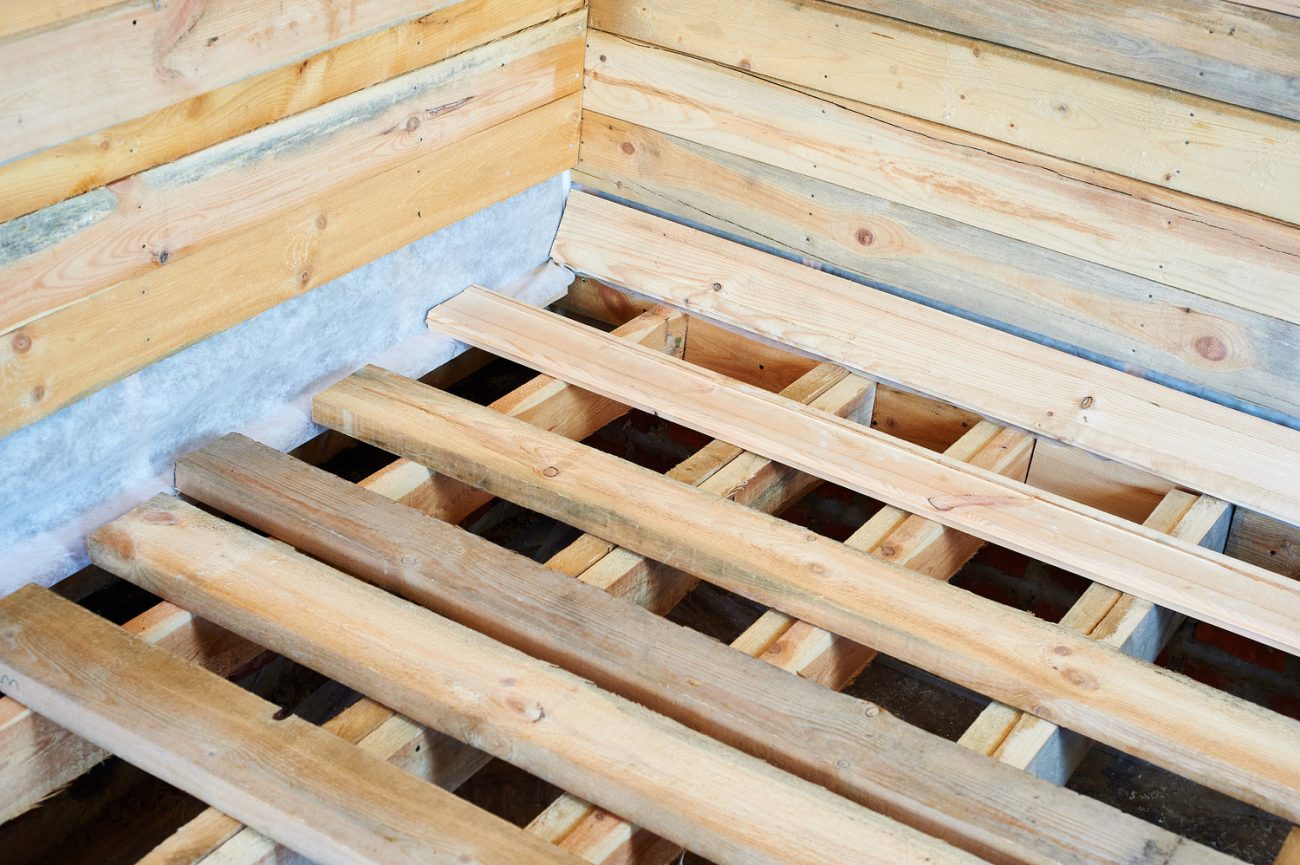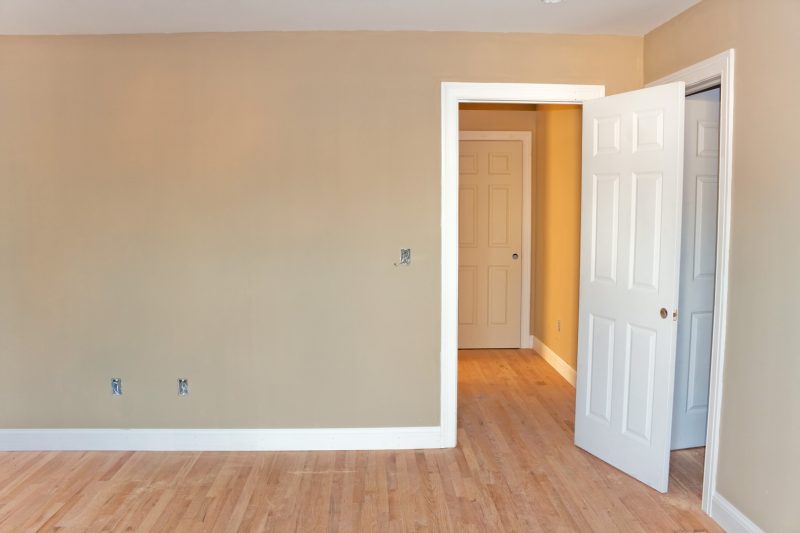The best place to start before you buy hardwood floors is to take stock of what you already have. The floors you choose will depend on your subflooring and other constraints. Here’s what you need to know before you start shopping for new hardwood floors.
Before you start buying floors
You need to know what you already have in your home before you start making any decisions about hardwood floors. What type of hardwood will depend on a few things like the type of subfloor you have, if there are any height restraints, and other floors you already have in the home.

Know if you have plywood or concrete subflooring before you start buying wood.
Sub-flooring
Before you start choosing between solid or engineered floors and the type of installation method – glue down, nail down, or floating floors – you need to check your subfloors. In most cases, you’ll find you either have concrete or plywood subfloors. Plywood subfloors will give you more options for the type of wood that you can choose, including solid hardwood. However, if your subfloor is concrete, your options become more limited.
With a concrete subfloor, you can either choose to work with engineered wood or you can add a plywood subfloor to allow for solid wood installation. If you decide to work with the concrete subfloor, make sure that it is even, or make sure that you make it even before you start installing the floors.
Height constraints

Check your doorways for height constraints.
The height of your doors, existing cabinets, and other built-in furniture will determine the height constraints that you need to consider. Solid hardwood is thicker than engineered, so before you buy solid hardwood, make sure you have enough height to work with. If there are cabinets already installed on the ground, they may restrict the height of your floors.
Matching other floors
If you are only getting new floors in one room, you have to consider the flooring in the other rooms. It’s possible to perfectly match your other hardwood flooring in the home, but you have to consider this before you choose a species of wood. The most successful ways to match other hardwood in the house is to choose the same species. That way you ensure that the color and the texture are similar, although you always have to be prepared for slight variations.
For a perfect match, have your old floors sanded and refinished to match the new. Time will change the wood, so if everything starts with a fresh stain and finish, they may age at the same speed and keep your floors consistent in style, textures, and tones.
Consult with a hardwood flooring expert for free to start your hardwood flooring project off right.

